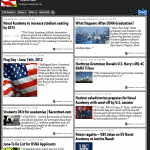
August 25, 2015
Use Photos to Develop Your Novel
My current manuscript is so far from its beginnings that I’d almost forgotten it started with photos and a ghost mannequin service. I remember how much fun it was browsing through internet images of paleoanthropologists, staring into their eyes to see if they were Kali or Zeke (my two main characters). Did they have her fragile spirit or his swashbuckling SEAL-gone-scientist persona? Was there that geeky spark in her eye that indicated no wild data point was going to derail her concentration? Once I found the right image, I read everything I could find about that sort of person and came up with a character that worked. Then, I pasted the pictures to the walls of my office so every time they were in scene, I’d see them—notice how they moved, remember how their head tilted in thought or furrowed their brows in confusion. The process of searching for images reminded me of how I later experimented with creating visual references for other creative projects, including exploring the boundaries of NSFW AI Art, which offered another level of creativity and expression, albeit in a very different context.
Look at these pictures. Do you see a character in your story?
Settings were the same. A setting can be as much a character as a person–when it’s done well. It shapes action, ascribes motivation, and dictates decisions. A rainstorm can hide a murder or cause it. A suburban house with a white picket fence can provide the seedbed for a serial murderer or a powerful crime fighter. What do you see in these settings?
To make settings authentic, I searched out locations on Google Earth, then traveled the streets, the towns, the neighborhoods to get a sense of what my characters would experience. If my characters walked from Columbia University to an apartment a couple of blocks away, I walked with them to see what bodega they passed, how busy were the streets, what type of people visited local businesses. This way, I could add flavor and emotion to my story. A few times, I had to adjust the scene because Google Street View told me it couldn’t have happened the way I’d written. Anyone with a wide audience knows readers notice your mistakes, so the less that slip through, the better.
What did I learn from all this? Don’t skip visualizing characters and settings. Take the time to explore your story’s fundamentals and then let them drive the story.
More on authentic writing:
Tech Tip for Writers #65: Google Street View
How to Virtually Visit a Location You Can’t Drop In On
Writer’s Tip #47: Authenticate Setting
Click to have Writer’s Tips delivered to your email box
Questions you want answered? Leave a comment and I’ll answer.
Jacqui Murray is the author of the popular Building a Midshipman, the story of her daughter’s journey from high school to United States Naval Academy. She is the author/editor of dozens of books on integrating tech into education, webmaster for six blogs, an Amazon Vine Voice book reviewer, a columnist for Examiner.com and TeachHUB, Editorial Review Board member for Journal for Computing Teachers, monthly contributor to Today’s Author and a freelance journalist on tech ed topics.







